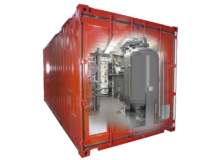
After oil and gas wells are drilled, completed, and placed into initial (primary) production, only about 12-15% of the original oil in place is typically recovered. This is due to the continually decreasing drive pressure of the well, making recovery difficult. Techniques such as fracturing, stimulation, and gas lift are sometimes used to assist and sustain the initial gas drive. Secondary recovery methods, most often water flooding of the oil reservoir or natural gas reinjection, if available, can be utilized to recover an additional 15 to 20 % of the trapped oil. Even after these techniques are used, as much as 65-70% of the oil still remains in the formation, difficult to recover. Tertiary recover techniques, such as gas injection using either carbon dioxide (miscible) or nitrogen (immiscible) can be used to increase the reservoir pressure and promote additional recovery.
Please download this market application publication for more information.

